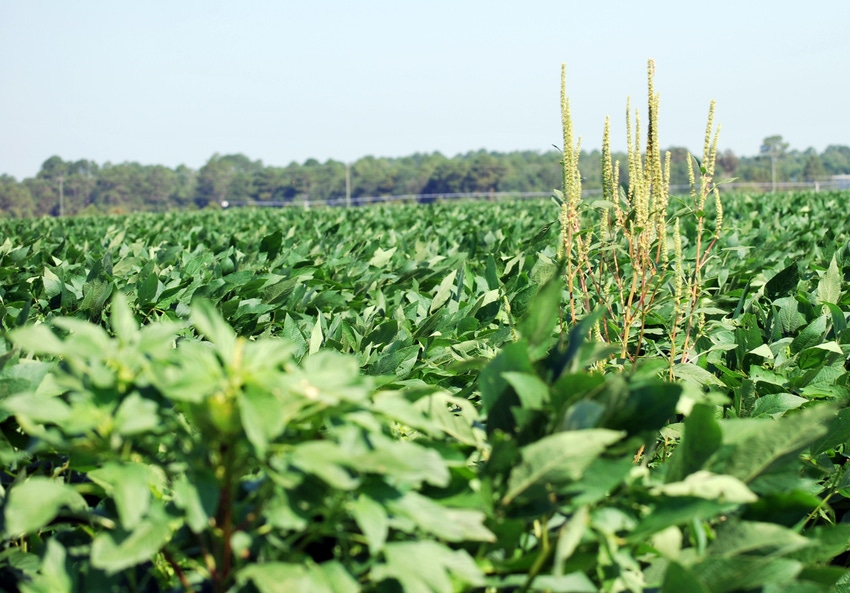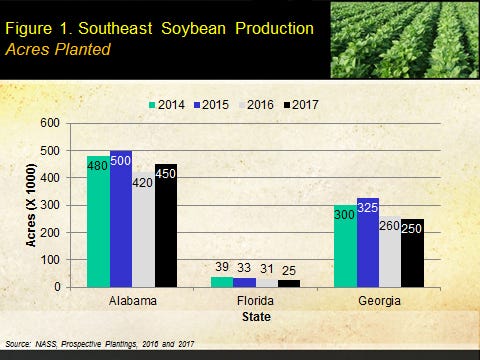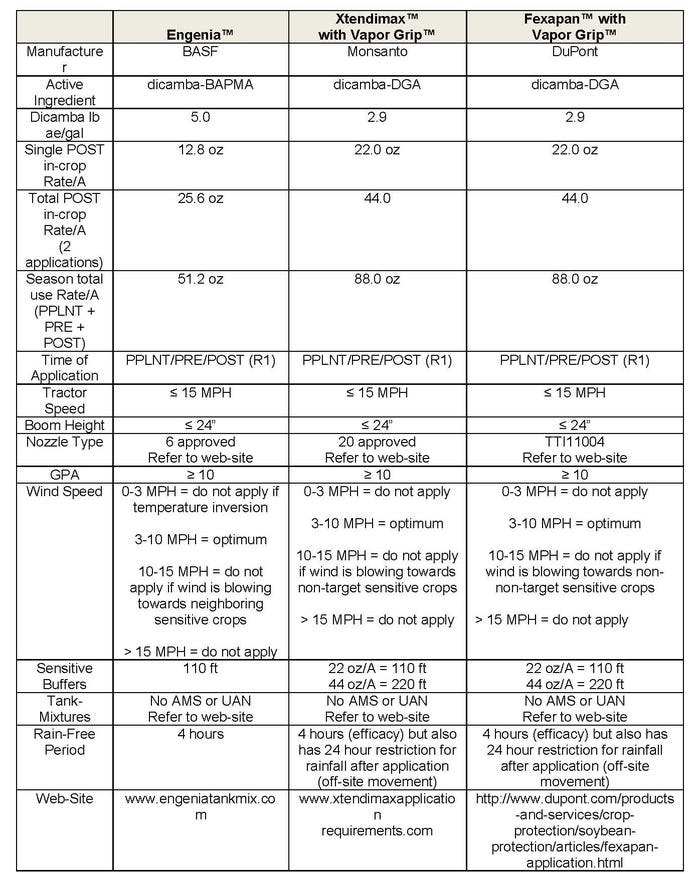April 10, 2017

Having wrapped up my winter county meeting schedule a few weeks ago, I am looking forward to getting my feet back in the field and getting my hands dirty. As I traveled around Georgia delivering the weed science gospel with my skinny sidekick (UGA Extension weed specialist Stanley Culpepper), I found it very interesting that not many folks wanted to talk about soybean weed control.
Recent NASS soybean planting intentions for the Deep South might help justify this observation. With that said, southeast growers who do care about soybean weed control had a ton of questions for me about the new Enlist (2,4-D choline) and Xtend (improved dicamba) technologies.
At this point in time, there is not too much to say about the Enlist system. In my research thus far, weed control performance with the Enlist system has been good. However, China has yet to grant import approval and southeast university variety performance data is non-existent. Consequently, I will focus my attention in this month’s column on the Xtend soybean system.
First and foremost, I want to make it absolutely clear that the new Xtend system is not a miracle cure or silver bullet for any of your current weed problems!
Soybean growers who intend to use this system must still start clean, use residual herbicides, and make timely postemergence applications of labeled dicamba formulations. If you fail to follow these 3 simple rules, you will likely experience huge disappointments with this or any other technology. Also, don’t forget that the use of narrow rows (<30”) is always a good strategy to help make top soybean yields and improve overall weed control.
On a regulatory note, Georgia growers who intend to apply Engenia, Fexapan or Xtendimax over the top of Xtend soybean varieties must have attended a Using Pesticides Wisely Training, have a current copy of all appropriate labels/data sheets, and check the appropriate web-sites at least 7 days before application for the most current list of approved nozzles and tank-mixtures.
To make it slightly easier to understand all of this mess, I have included a quick summary of these products in Table 1. Disciples of this column from other states should double check with their local pesticide sheriffs.
Although a ton of Xtend SE soybean variety performance data is not available, University of Georgia, Auburn and University of Florida had a few of these varieties in their 2016 OVT trials. My evaluation of these variety results is that there are definitely some winners and losers, so I would scour the data to find the best fit for your fields. Variety selection is arguably the most important soybean production decision that you will make.
Georgia soybean variety test results.
Alabama soybean variety test results.
Florida soybean variety trial results.
Since I most likely exceeded my word count this month, this might be a good place to drop back and punt. It is always exciting to get the chance to use new technologies. However, don’t let this excitement cloud your senses. These new auxin technologies are nowhere near as foolproof as the glyphosate-resistant technologies might have appeared to be to some (not me) before the evolution of resistance. Our industry cannot afford to drop the ball on this one!
As always, good weed hunting!

About the Author(s)
You May Also Like






